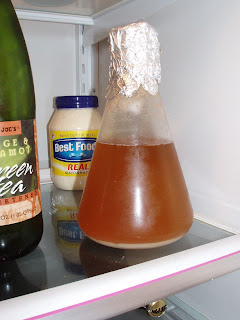I knew this would be the problem with trying to improve my beer making with making a yeast starter. It is remembering to do it 4 days prior to brew day! Of course, I forgot again. Now, I have to buy all the ingredients at the local brew shop tomorrow after work (which will be Friday night). I plan to brew on Saturday. I have a stir plate and plan on using a Wyeast liquid pack. Would there be any possibility to create a starter and have it ready to pitch Saturday afternoon at this point?
Or can I brew the beer (wort) on Saturday and keep it in a carboy several days until the yeast starter is ready to pitch?
Or can I brew the beer (wort) on Saturday and keep it in a carboy several days until the yeast starter is ready to pitch?



